Excerpts from Jim Conrad's
Naturalist Newsletter
from the August 27, 2017 Newsletter issued from Rancho Regenesis in the woods ±4kms west of Ek Balam Ruins; elevation ~40m (~130 ft), N20.876°, W88.170°; north-central Yucatán, MÉXICO
MALE BAMBOO
Not far from the hut there's a sinkhole, or cenote as they're called here, in which numerous plantings have been made. A foot trail spirals to the sinkhole's bottom, and the owner visualizes someday visitors following that trail as they admire the plantings. One of the most impressive species there is a kind of giant bamboo growing maybe 50ft tall (15m). Vegetation inside the sinkhole is so lush that there's no perspective from which the bamboo clump can be seen in its entirety, but in the pictures below you can begin getting an idea of how impressive this bamboo is:
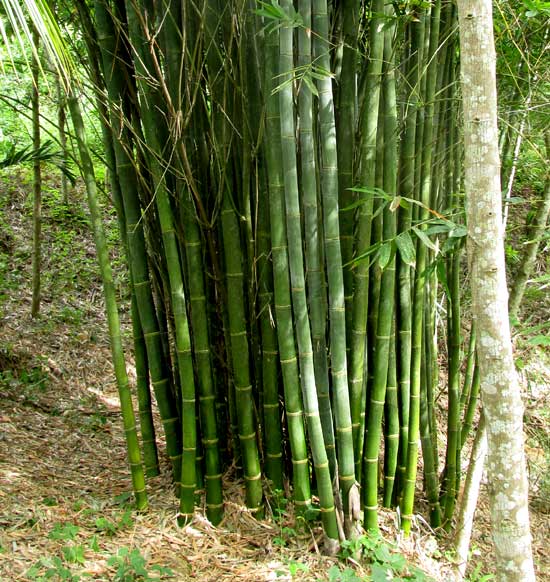
The bamboos' stems, or "culms," are about four inches in diameter (10cm). My hand on a culm for scale is shown below:
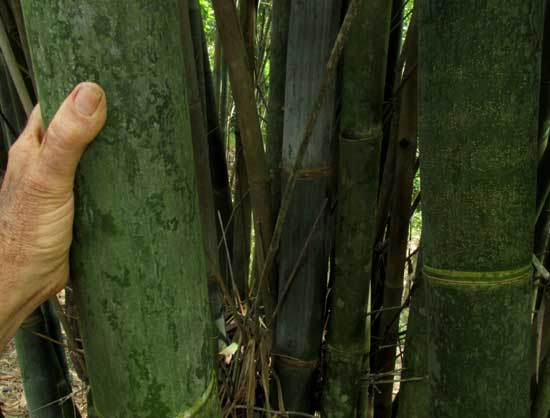
The big culms are used in various ways at the rancho, so occasionally they've been cut. When cut between the culms' joint-like nodes, they're hollow, as you can see below:
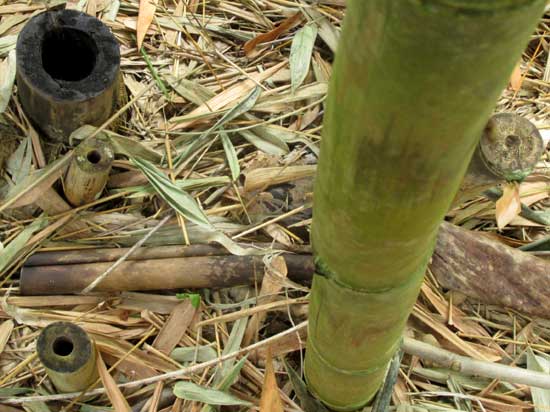
New culms sprout from the soil as shown below:
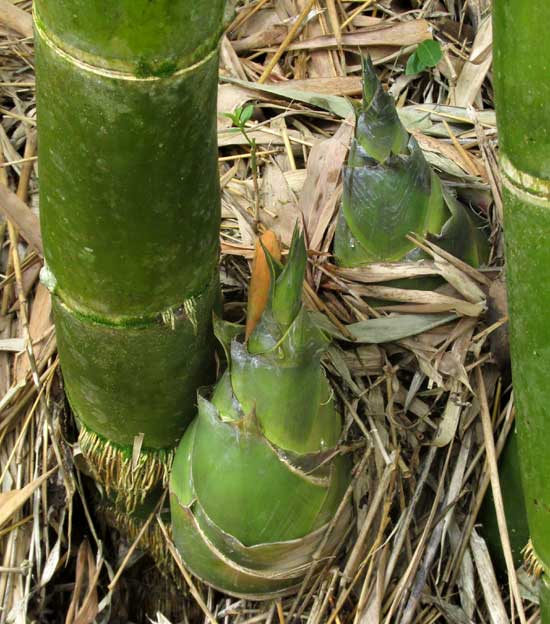
In that picture notice that the culms' lower nodes are sprouting adventitious roots. Standing at the bamboo cluster's base you can look up and see grass-like leaves -- bamboos are members of the Grass Family, the Poaceae -- on forking, slender branches, as seen below:
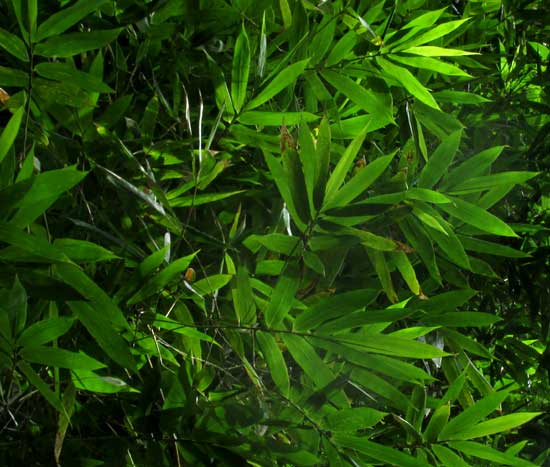
With all these impressive features, it seems that it would be easy to identify this giant grass. However, several bamboo species grow to great size, and some are very similar to ours, such as one usually called Giant Bamboo, Dendrocalamus giganteus, which grows even taller than ours. Normally I need flowers or maybe fruits to identify flowering plants, but ours have no flowers.
Still, by comparing our pictures with those on the Internet, and confirming measurements of section length, culm diameter, general culm color, appearance of the sprouts and other features, I've become fairly certain that we have DENDROCALAMUS STRICTUS, distributed widely across South and Southeast Asia, and planted in the tropics in many lands.
One reason I'm comfortable with the identification is that Dendrocalamus strictus is one of the most frequently cultivated giant bamboos, and is known to have been planted here in the Yucatan. In fact, one website advertises "bamboo lump charcoal" made from Dendrocalamus strictus growing at a plantation here. At the www.guaduabamboo.com website I read that the stems of Dendrocalamus strictus grow and spread for 25-45 years, then sporadic flowering commences and continues for about five years. Elsewhere I read that once the culms have flowered, they die.
Dendrocalamus strictus goes by several English names, none of which are appropriate. On the Internet "Male Bamboo" seems to be the most commonly used, though the flowers are mostly bisexual -- so the plants are just as female as they are male. Sometimes its called "Solid Bamboo," but you can see that our culms are hollow inside. I read that in dry climates they may be solid or largely so, but in more humid environments they're hollow. They're also called Calcutta Bamboo, but the species is grown far beyond Calcutta, plus sometimes they're Guadua Bamboo, which doesn't ring any kind of bell here.
Besides the fact that Dendrocalamus strictus is so impressive, the reason it's grown so extensively is that it's very useful. In countries such as India where it's extensively grown, paper mills use it as a raw material, and also made from it are house frames, scaffolding, fences, furniture, musical instruments, mats, rafts, baskets, household utensils and much more. Planted on heavily eroded land, its dense network of roots holds the soil in place. The young shoots are edible and its leaves are fed to livestock. A "tea" brewed of the leaves and culm nodes is used in traditional medicine.